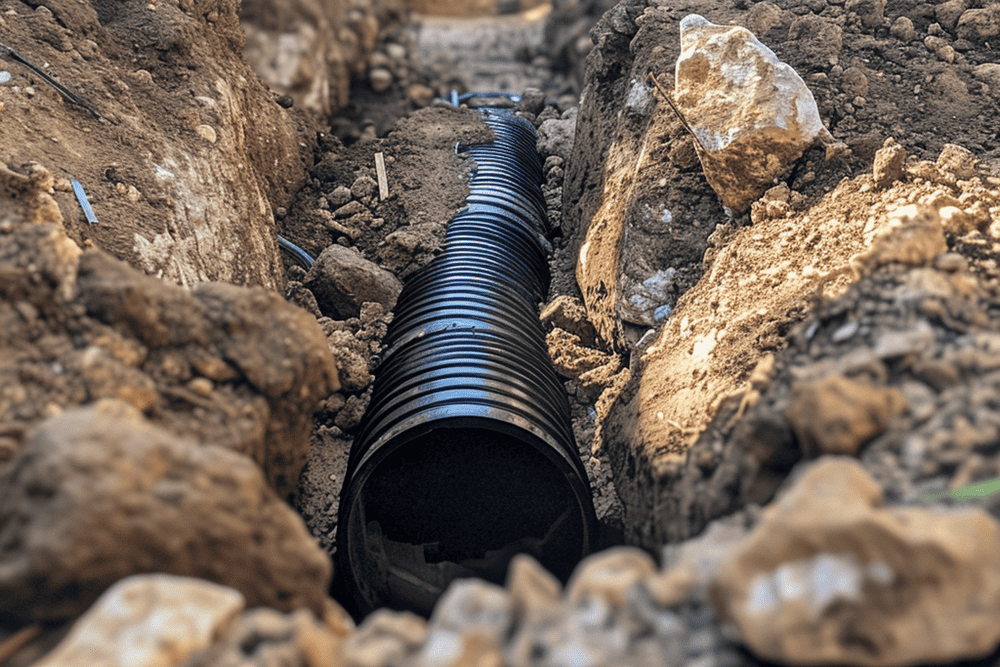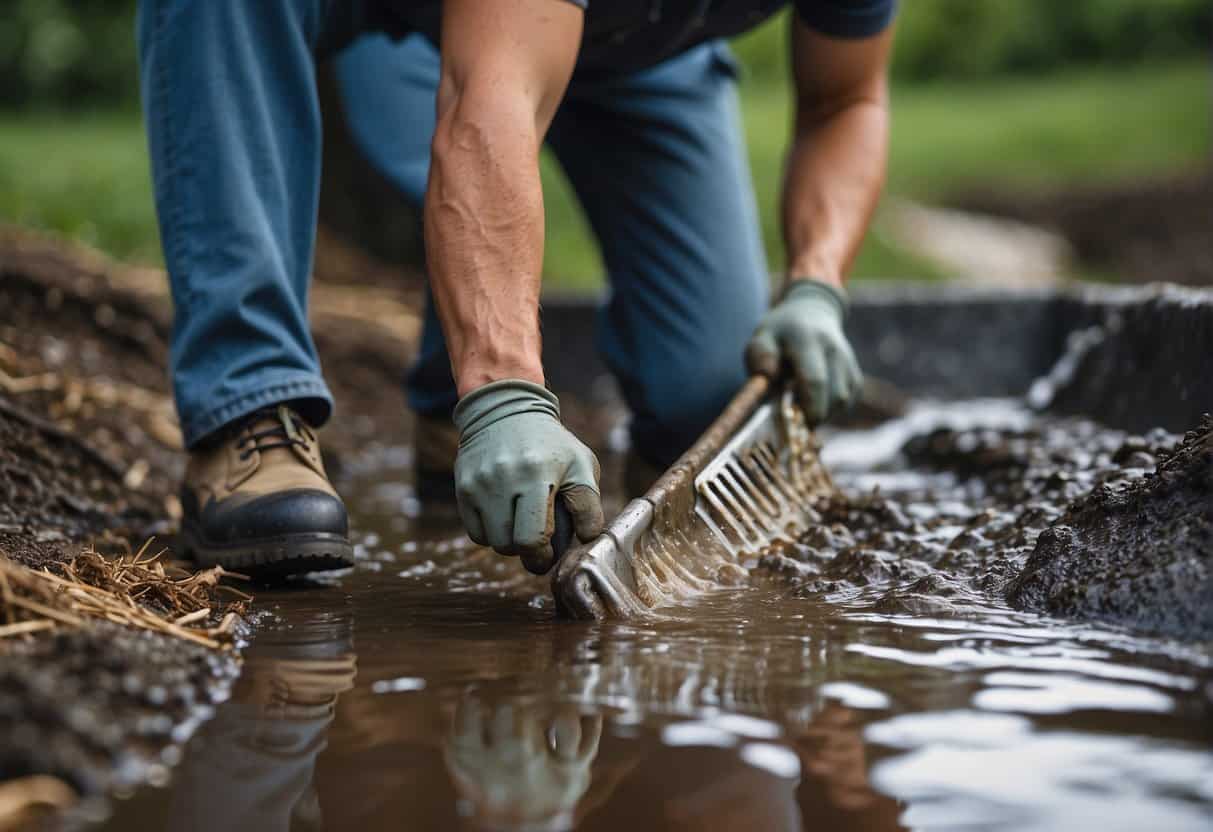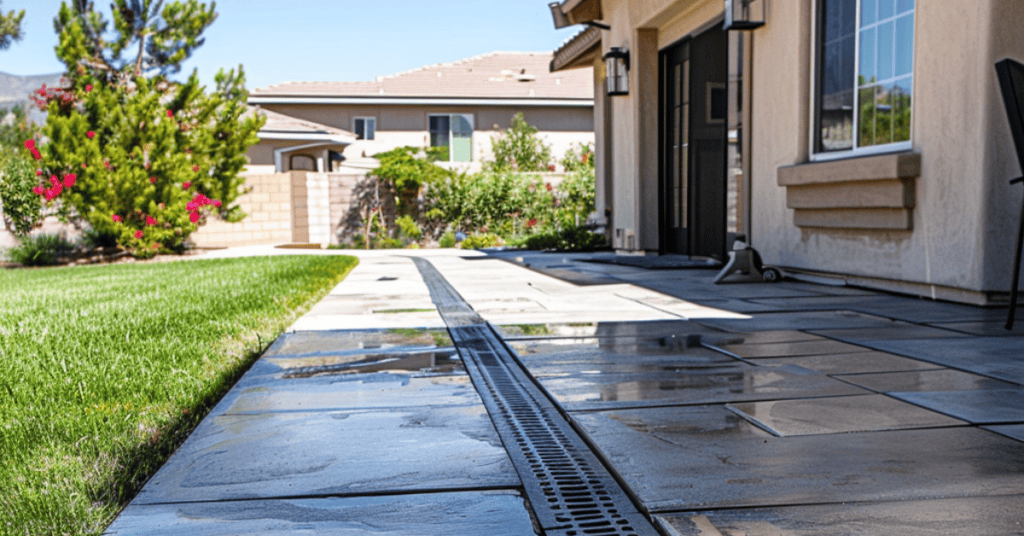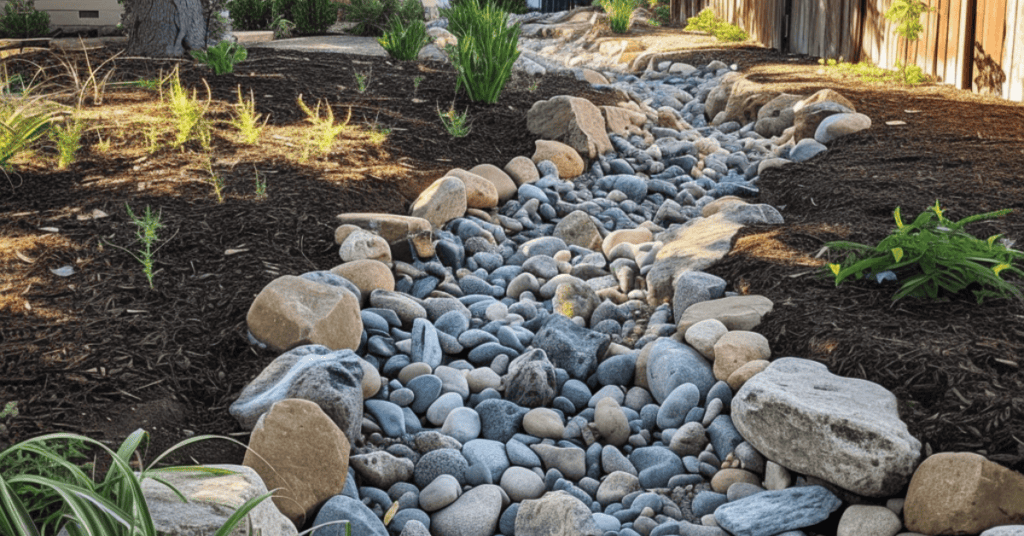A Guide to Unclogging Your French Drain for Dallas Area Homeowners
The weather in North Texas can be extreme. It can be extremely wet or extremely dry. Spring and fall are typically the wettest months in the Dallas area, and when the rain comes, you need to make sure that it doesn’t damage your property. Water seeping into your foundation as well as water pooling in your yard can become a big problem. The result can be basement flooding – and foundation repair is extremely costly – if you don’t have a proper drainage system.
That’s where French drains come in. French drains take water from where it can cause damage and transport the water harmlessly away. They also alleviate the pressure that is put on your sump pump so that it doesn’t become overwhelmed by keeping a large volume of water from ever reaching your basement.
French drains are highly reliable and low maintenance. That said, even the best French drains can clog and no longer function properly. Over time there are three primary culprits that can contribute to a clogged drain: debris, soil or sediment accumulation, and tree roots.
Components of a French Drain
Understanding clog formation requires a basic understanding of the components and how each functions within a french drain system.
These components serve to protect your home’s foundation from water damage. Together, they are able to safely channel water away from your foundation and other sensitive areas and deposit the water to a place where it can be safely drained away. A yard drain also functions to prevent water from pooling in your yard.
Your French drain consists of a trench filled with gravel and a perforated plastic pipe. This pipe directs water flow away from your home’s foundation—crucial for maintaining structural integrity. Think of the drain as a hidden moat that safeguards your castle.
How Your French Drain Works
Water collects in the trench, filters through the gravel, then flows into the pipe. The slight slope in the pipe guides the water to an exit point that is located at a safe distance away from your home’s foundation and neighboring properties.
Identifying Common Clog Sources
To maintain a functional French drain, you must spot and tackle common clog sources.
Natural Debris Accumulation
Natural debris like leaves and twigs may be able to enter your French drain system. This debris collects over time, potentially resulting in significant blockages. We’ll talk more about ongoing maintenance further down in this article, for now know that it is important to conduct periodic checks and French drain cleaning to remove this material and keep water flowing smoothly.
Soil and Sediment Intrusion
Fine sediment and soil particle buildup can also choke your drain. These particles sneak in through tiny gaps or as part of the water runoff. Filter fabric around the pipe (also called a drain sleeve) can help prevent sediment intrusion.
Plant and Tree Root Interference
Tree roots and plant growth can intrude into your French drain, causing severe clogs. They chase the moisture within the system and can even crack the pipes to gain access. Regular inspection can spot early signs of root interference.
Initial Assessment and Preparation
Begin your project by planning and preparing the right way. Ensure you have the necessary tools and safety gear, and locate your French drain’s access point.
Safety and Tool Gathering
First, prioritize your safety. Wear safety glasses to protect your eyes and gloves to shield your hands from sharp objects and debris. Gather your tools:
- Safety glasses
- Gloves
- Pressure washer (optional, for high-pressure rinse) – although for assessment purposes, a regular garden hose can be effective to determine if water is properly draining
Access Point Location and Examination
Find the access point of your French drain. Depending on your property and the potential drainage issues, it could be near a gutter downspout. Another logical location for a drain access point might be in a low lying location of your yard.
Examine the access point of your French drain for visible clogs – then move on to clog removal.
An Overview of the Different Methods to Unclog a French Drain
Manual Unclogging Techniques
Physical Removal of Obstructions
Check the drain entrance for visible debris. Remove leaves, twigs, and sediment by hand. This can restore flow and prevent deeper clogs.
Drain Snaking for Deep Clogs
Use a drain snake to dislodge clogs beyond your reach. Feed the snake into the drain until you hit resistance. Rotate it to break apart the blockage, then extract. Flush with a steady stream from a garden hose to clear remaining debris.
Using Water Pressure to Clear Clogs
High-pressure water can effectively dislodge blockages in your French drain – but use caution as extremely high pressure could potentially damage your french drain, making the problem even worse.
Flushing with Garden Hoses
To flush a blockage, feed a garden hose into the drain. Make sure the water runs at full force to clear out any debris. You need a persistent flow to ensure that the water pressure reaches the blockage and doesn’t just pool around the entry point.
Applying Pressure Washers
For tougher clogs, a pressure washer with the right nozzle can do the job. Position the nozzle at the drain’s opening and carefully feed it while the water pressure works to dislodge the blockage. Gradual and steady pressure helps prevent any damage to your drain.
Mechanical and Powered Equipment
Unclogging a French drain often requires more heavy-duty tools when manual methods fall short. Specific mechanical and electrical equipment can handle stubborn clogs caused by sediment buildup or root intrusion.
WARNING
Before operating any powered drain cleaning equipment, make sure that the equipment is compatible with the type of drain that you have in your yard. If your French drain pipe is a thin, brittle corrugated plastic pipe, a drain cleaning snake may permanently damage your French drain. Be sure to ask the rental equipment agency representative if the drain cleaning equipment is compatible with your French drain.

Not all pipes used in French drain systems can withstand powered drain cleaning equipment
Operating a Drain Snake
When your French drain suffers a blockage, a drain snake presents a reliable solution. You can buy or rent a drain snake from equipment rental companies like Lowe’s or Home Depot. Check out our comprehensive list of Dallas equipment rental companies to find a provider.
A high end drain cleaning snake includes a motorized steel cable that rotates to break through the obstructions within the pipes. To use, insert the cable end into the drain and carefully feed it while the motor runs. The movement dislodges debris and clears the path.
Employing a Heavy-Duty Drain Auger
A heavy-duty drain auger works well for more challenging clogs deep within your French drain. These augers come with larger cables and often feature a claw at the end to grasp and remove blockages.
To clear your drain, extend the steel cable into the pipe until you meet resistance, then turn the auger’s handle to let the claw engage the clog. Apply steady pressure to break the obstruction apart or capture it for removal. Like drain snakes, rental options for heavy-duty drain augers are available locally in the Dallas metro area.
When to Hire a Professional

Unclogging a French Drain can become a messy, complex business that unfortunately isn’t always a DIY project
Complex Clog Situations
Deep clogs, often identified by water backing up or very slow drainage, can hint at issues far below the surface that specialized drain equipment can address.
If you’re not particularly handy, or if you’ve tried flushing your French drain with water to no avail, this may indicate a severe obstruction that might require a drain cleaning service. While some clogs can be flushed out, more complex clogs can be nearly impossible to fix.
This is especially true if tree roots have severely damaged your French drain. This situation almost always requires replacement of at least a portion of your French drain as the roots can severely damage drainage pipes.
Assessment of Structural Damage
Look for signs of structural issues around your French drain, like sinking ground or cracks in nearby concrete. These symptoms suggest the problem may go beyond a simple clog.
A professional landscaper or a drain specialist can assess the damage and determine if there is a need for repair. They can ensure that any repair work maintains the integrity of your property and doesn’t lead to more extensive issues in the future.
Post-Unclogging Actions
Assuming you’ve successfully cleared the clog, take the following actions to prevent future blocks and water damage.
Restoration and Cleanup
First, restore the area around your French drain. This involves filling any holes you dug and ensuring the landscape slopes away from the foundation for proper drainage.
Remove any debris, such as dirt clods or rocks, that could enter and clog the system again. Use your garden hose to wash down the area, and check for proper water flow away from the foundation to prevent moisture buildup.
Final Inspection and Testing
Conduct a thorough inspection to confirm the absence of standing water, which indicates a successful unclog. Test by turning on your garden hose and directing water into the drain.
Observe the flow to ensure there’s no backup that could signal a remaining clog. Watch for signs of groundwater entering the system as expected, with no overflow or flood near the discharge point.
If water flows freely and exits where it should, you’ve effectively restored full function to your French drain.
Preventive Measures for Clog Prevention
It turns out that in many instances, a french drain clog can be prevented. The key is periodic, routine maintenance and proper landscaping techniques.
Routine Inspection and Cleaning
What You Need to Do:
- Inspect: Check your French drain 1-2 times annually for debris accumulation.
- Clean: Flush the system with a hose to clear minor sediment buildup.
Doing this regularly can allow you to identify and remove minor clogs and prevent minor issues from turning into major, expensive problems.
Landscaping Considerations
French drain clogs are oftentimes self-inflicted wounds caused by very poor landscaping decisions. To make sure you make the right landscaping decisions, you need to know where your french drain access and exit points are, along with where your drain travels under your property.
Mind Your Planting:
- Grass: Choose grass types that prevent soil erosion but don’t invade the drain.
- Trees / Bushes: Plant trees far enough away from your french drain system so that roots won’t reach the drain. Select plants with non-invasive roots to prevent future blockages.
- Slope: Ensure that landscaping activities don’t affect or modify the proper slope of your french drain. Design your landscape to direct excess water away from the foundation and basement.
- Soil Strategies: Aerate your soil regularly to prevent compaction. Healthy, loose soil promotes better yard drainage.
Frequently Asked Questions
What can cause a French drain to stop draining properly?
Clogs often occur from soil intrusion or the collapse of old pipes. Regular inspections can help identify these issues early.
Which methods are effective for unclogging an outdoor French drain?
Use a plumber’s snake to dislodge blockages and then flush the system with water. For tougher clogs, consider a high-pressure hose to break up the debris.
What are the common reasons for a clogged French Drain?
Leaves, roots, and sediment can accumulate in your drain. Proper installation and the right materials minimize these risks.
How much does it typically cost to have a French drain unclogged by a professional?
Prices vary based on your location and the severity of the clog, but it typically ranges from $100 to $500. A damaged french drain pipe can be considerably more expensive – especially if there is damage due to tree roots. If a new french drain is required it can cost $5,000 or more.
What are the signs that indicate a French drain is blocked?
Watch for water pooling in the yard or a wet basement. These are clear indicators that your French drain is not working effectively.

